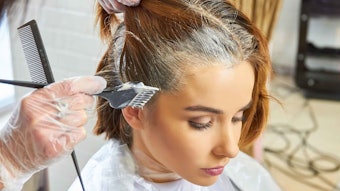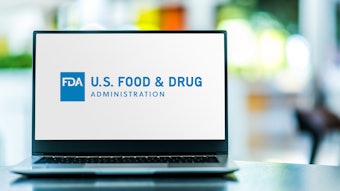The Personal Care Products Council has responded to a report by the Campaign for Safe Cosmetics (CSC) alleging that face paints not only contain lead, nickel, cobalt and chromium but also bear misleading claims. The council reported that face paints only contain trace levels of these naturally occurring heavy metals, which are well below the allowable levels set by the US Food and Drug Administration (FDA) for approved colors and do not present a safety concern.
On Oct. 27, 2009, the CSC posted the article"Pretty Scary" online, which reported that face paints can cause lifelong skin sensitization and contact dermatitis. Authors of the report sent 10 children's face paints to an independent lab for evaluation. The results indicated that all of the paints contained levels of lead, from 0.05–0.65 ppm, and six of the products contained 1.6–120 ppm of the allergens nickel, chromium and/or cobalt. From these results, the CSC wrote the report cautioning parents not to use face paints on children until safety standards are put into place.
John Bailey, chief scientist for the council, responded to this report in a press statement: "Face paints are novelty products that are applied infrequently and sold for use on special occasions or in theatrical settings. Like cosmetics, these products are regulated by the FDA, and the color additives used in them must be approved and listed by FDA. Although the report alleges that the FDA does little to ensure the safety of these products, the agency does monitor face paints and has twice worked with manufacturers on recalls of face paint items when they were found to cause skin irritation and rashes.
"Parents are advised to follow all directions on how to use and remove face paints, avoid products that indicate they are not to be used on children, and test products on [their] child's arm a couple of days in advance to check for any potential allergic reaction. For more information on face paint safety and tips for safe use, parents should consult the FDA Web site at: www.fda.gov/Cosmetics/ProductandIngredientSafety/ProductInformation/ucm143055.htm. Parents may also read face paint product labels and consult this site to ensure that the color ingredients in the product they intend to buy are approved by the FDA."
Bailey continued that if parents follow these basic guidelines, they could enjoy Halloween festivities with their children without unnecessary worry about the safety of these novelty products. He added that although the CSC recommends that parents mix their own children's face paints, parents should note that since heavy metals are ubiquitous in food, water, air and other consumer products, there is no guarantee that homemade face paints are safer or as safe as face paints that may be purchased in stores.






!['I think the biggest game-changer about [MoCRA's] ... requirement for GMPs is how it changes what it means to be adulterated,' Brandi Reinbold, senior manager of global certification for NSF International, said in this sponsored videocast. Register now to watch and learn more. It's free.](https://img.cosmeticsandtoiletries.com/files/base/allured/all/image/2023/11/NSF_Intl_Thumbnail.6554efdc29816.png?auto=format%2Ccompress&fit=crop&h=191&q=70&rect=275%2C70%2C1328%2C748&w=340)



